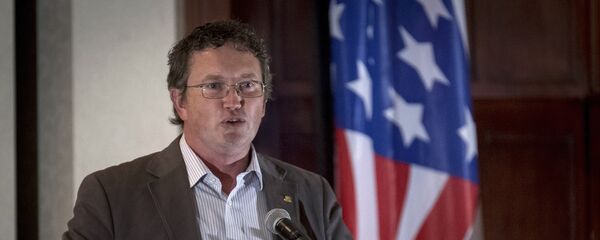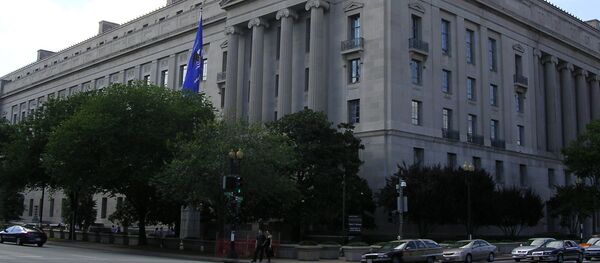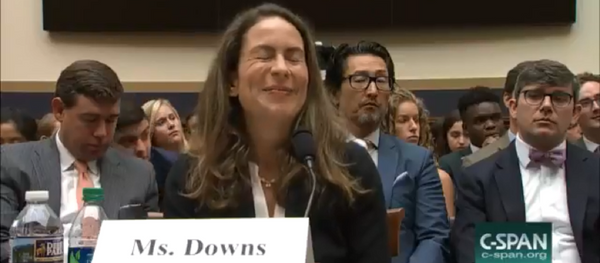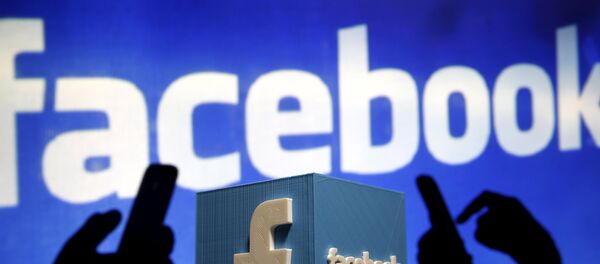In the Russiagate narrative, the story goes that Russian "entities," typically connected to the Russian government, used social media to exert a determinative influence over American political attitudes in key political battlegrounds in the weeks leading up to the election, simultaneously colluding with Trump's presidential campaign to make him US head of state. Indeed, a New York Times article published on September 20, titled "The plot to subvert an election," presents the canonical version of these events, such as the mainstream media has decided are true.
Porter, a historian, investigative journalist and analyst specializing in US national security policy, spoke with Radio Sputnik's Loud & Clear Friday about his exhaustive new article in Consortium News addressing — and debunking — that narrative and those claims.
Porter said he wasn't trying to conclusively disprove the idea that the Internet Research Agency had tried to affect the election, but he did note that "if they were trying to affect the election, it was a pathetically small effort and clearly did not have any impact that one could identify," and thus the New York Times' claim to the contrary is nonsensical.
The following is what Porter described to hosts John Kiriakou and Brian Becker as "the key part" of his article, published Wednesday:
"What Facebook general counsel Colin Stretch actually said in testimony before the Senate Judiciary Committee last October was quite different from what the Times reporters claimed. ‘Our best estimate is that approximately [126 million] people may have been served one of these [IRA-generated] stories at some time during the two year period,' Stretch said.
"Stretch was expressing a theoretical possibility rather than an established accomplishment. Facebook was saying that it estimated 126 million Facebook members might have gotten at least one story from the IRA — not over the 10-week election period but over 194 weeks during the two years 2015 through 2017. That, figure, in turn, was based on the estimate that 29 million people might have gotten at least one story in their Facebook feed over that same two-year period and on the assumption that they shared it with others at a particular rate."
Further, Porter told Sputnik, Facebook's own data on its blog reported that "only one out of 10 of the content put into Facebook news feeds is actually seen by anybody," which "discounts the 29 million people by at least a factor of 10 in terms of anybody actually having seen any of that."
On top of that, Facebook has said that IRA content only accounts for "only 0.0004 percent of the total content" seen by the 29 million people Facebook judged to have gotten at least one IRA story in their feeds over that two-year period, which he called "an astounding number." In other words, 11,600 people may have seen one IRA story once.
Porter said the tone of the NYT piece, authored by Scott Shane and Mark Mazzetti, "carries through that conceit, that they are, in fact, giving us the ultimate storyline about this election. I think it's particularly irresponsible and sinster of them to have so played tricks with the reading public about these figures that they use. And of course it's possible that they glanced at the headlines that the New York Times itself used in its own coverage and never bothered to look further, and I suspect that that's the case, but that in itself, to my mind is a damning indictment of their coverage."
Porter also noted the existence of "a huge market for — many of them fake [Twitter] accounts — but accounts that are dead that are bought and sold by the hundreds of thousands, much of which takes place in Russia." That's taking place regardless of the election cycle, "but of course it's relevant to it," he said, noting that Shane had reported on the existence of those markets in September 2017, a year prior to his Times piece with Mazzetti.
"So he knows about it, but it doesn't show up at all. There's no relationship in his mind, apparently, between that and the story that he wrote last month."
"You have to begin by deflating the figures that Shane and Mazzetti used to impress the public with the idea that 1.4 million Americans were being interacted with by the Russians in the election campaign period, by 90 percent," Porter said. In his article, he explained in further detail:
"Shane and Mazzetti's treatment of the role of Twitter in the alleged Russian involvement in the election focuses on 3,814 Twitter accounts said to be associated with the IRA, which supposedly ‘interacted with 1.4 million Americans.' Although that number looks impressive without any further explanation, more disaggregated data provide a different picture: more than 90 percent of the Tweets from the IRA had nothing to do with the election, and those that did were infinitesimally few in relation to the entire Twitter stream relating to the 2016 campaign.
"Twitter's own figures show that those 3,814 IRA-linked accounts posted 175,993 Tweets during the ten weeks of the election campaign, but that only 8.4 percent of the total number of IRA-generated Tweets were election-related.
"Twitter estimated that those 15,000 IRA-related tweets represented less than.00008 (eight one hundred thousandths) of the estimated total of 189 million tweets that Twitter identified as election-related during the 10-week election campaign. Twitter has offered no estimate of how many Tweets, on average, were in the daily Twitter stream of those people notified by Twitter and what percentage of them were election-related Tweets from the IRA. Any such notification would certainly show, however, that the percentage was extremely small and that very few would have been read."
Antonio Garcia Martinez, a former product manager for Facebook, wrote in Wired in February 2018 that "Russia's Facebook ads were almost certainly less consequential than the Trump campaign's mastery of two critical parts of the Facebook advertising infrastructure," the ads auction, and two "audience" functions that plumb for data to be used for advertising to likely product purchasers.
Martinez wrote that Trump's campaign mastered the algorithms behind how Facebook evaluates the "value" of an ad, based on how well as clickbait or view-bait or comment-bait it thinks the ad will perform, to effectively out-bid Clinton campaign ads on the platform.
"During the run-up to the election, the Trump and Clinton campaigns bid ruthlessly for the same online real estate in front of the same swing-state voters. But because Trump used provocative content to stoke social media buzz, and he was better able to drive likes, comments and shares than Clinton, his bids received a boost from Facebook's click model, effectively winning him more media for less money. In essence, Clinton was paying Manhattan prices for the square footage on your smartphone's screen, while Trump was paying Detroit prices. Facebook users in swing states who felt Trump had taken over their news feeds may not have been hallucinating," Martinez wrote.
"The Like button is our new ballot box, and democracy has been transformed into an algorithmic popularity contest," Martinez mused.






